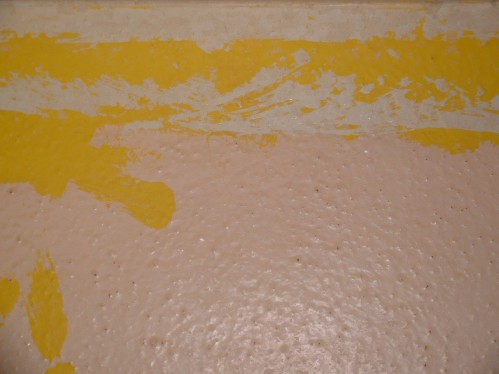On blogging There are a bunch of preliminary papers up at the
Social Science Research Network on "Bloggership: How Blogs Are Transforming Legal Scholarship". These are being prepared for a conference on blogs and legal scholarship. As the title suggests, it's centered around those in the legal/academic profession (Althouse, Instapundit), so only tangentially related to the humble archaeology blogworld.
The one I found most of interest was
Blogging While Untenured and Other Extreme Sports by Christine Hurt and Tung Yin. It deals with the conundrum of being a junior faculty member and blogging. They quote Randy Barnett of the Volokh COnspiracy on the dangers of blogging while pretenured:
1) Potential negative reaction by tenured faculty to one's opinions. This is especially true of opinions to the left or right of the bulk of the faculty. 2) The risk of distraction from the long-term scholarship that leads to tenure and, more importantly, generates the knowledge that makes one a genuine scholar rather then solely a polemicist or pundit.
This seems quite like the usual criticism of those who engage in popular presentations of one's subject matter. Almost universally, those who popularize a discipline are generally assumed to be "not serious scholars". Rarely (Carl Sagan, Stephan Hawking, SJ Gould) those who popularize science are also thought well of in 'serious' circles.
Also (quoting Larry Solum):
If you say something intemperate, ill-informed, or offensive on a blog, it may create a lasting negative impression. This is not speculation. I know of more than one academic blogger -- both senior and junior -- who has prompted multiple negative remarks.
So there are two perceived risk factors: That blogging is unserious and takes away from time better spent pursuing purely academic writing, and that blogging may reveal personality traits or opinions that put you at odds with those in a position to grant tenure. A quote from Althouse also mentions the possibility of some jealousy on the part of senior colleagues who view the higher profile of bloggers as somehow threatening. They end up using a few more categories, namely: Time, Being Controversial, Being Wrong, Persona Questions, and Franchise Blog Vs. Entrepeneur Blog (this latter seems a bit off topic to me).
But they also highlight some possible positive outcomes, the most imprtant of which is being known outside of your small specialty area, especially if you are at a smaller school.
There's a ton of interesting commentary in that paper that I shan't comment upon further. Suffice it to say, however, that some of those negatives have occurred to Yours Truly at various times (okay, almost all the time). There are many controversial (both academic and social/political) aspects of archaeology/anthropology that can really get people's dander up. This is even more the case here in the US when dealing with Native American remains. Anthro faculty do indeed have an instututional bias on many issues and one goes against that at one's professional peril. And, going farther than the above paper, it can be risky from a standpoint of publishing and obtaining grant funding as well as hiring.
The blogosphere tends to be very rough and tumble and
highly opinionated -- the latter being the main reason it's become so popular in the first place. Often, the civility (usually) inherent in scholarly writing, especially when critiquing the work of others, can be forgotten when just zipping off one's thoughts on a blog. It's much the same problem many people have in email communications generally: we often tend to think of email and posting as far more conversational than it really is. Thus, we type something and assume that the tone of voice in our heads is being automatically rendered on the page for all to see and understand, and later can't imagine how someone could possibly take offense at what we (thought we) said. Writing
is an art and it takes time and effort to put down in text what it is you are
really trying to convey. Emoticons took over somewhat for this non-textual conveyance of meaning, but in the end it's
what you write, not the variety of emoticons you toss around that gets you noticed and understood.
ArchaeoBlog hasn't gotten much hate mail. Actually, only one and that was after an offhand comment of no particular consequence. With some exceptions, the degree of riled-ness tends to be in indirect proportion to the actual importance of the subject. Try to talk about genocide in Darfur and people yawn. But just mention American Idol
once and you'll get a thousand emails questioning your immediate ancestry for being such a musical dunderhead.
So, y'ain't gonna get a
whole lot of opinion here. Bias maybe, on what gets covered. But what ought to be done with Kennewick Man will be played out elsewhere, thankyouverymuch.






